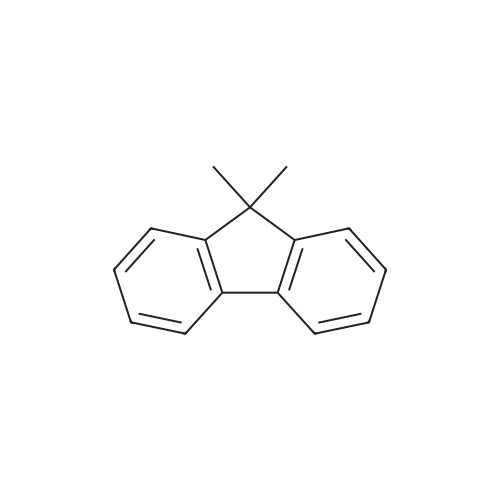Polyfluorenes Bearing N,N-Dimethylpiperidinium Cations on Short Spacers for Durable Anion Exchange Membranes
Allushi, Andrit
;
Bakvand, Pegah Mansouri
;
Jannasch, Patric
Macromolecules,2023,56(3):1165-1176.
DOI:
10.1021/acs.macromol.2c02291
More
Abstract: Alicyclic quaternary ammonium cations having all the β-protons in a strain-free ring structure are in general highly base-resistant and are thus very attractive to employ for anion exchange membrane (AEM) applications. However, tethering cations such as N,N-dimethylpiperidinium (DMP) to polymer backbones without introducing any weak links is quite challenging. In the present study, we have attached pairs of piperidine rings in their 4-position to fluorene and 2,7-diphenylfluorene via methylene bridges using straightforward SN2 reactions. These fluorenes were subsequently utilized as monomers in polyhydroxyalkylations to prepare poly(fluorene alkylene)s with different contents of the piperidine groups. AEMs were cast after quaternizing the piperidine groups to introduce DMP and spirocyclic 6-azonia-spiro-[5,5]undecane-6-ium (ASU) cations, resp. The AEMs reached very high hydroxide ion conductivities, 100-156 mS cm-1 at 80°C, in the ion exchange capacity range 1.8-2.4 mequiv g-1. X-ray scattering showed ionomer peaks indicating ionic clustering with a characteristic distance d = 2.0-2.9 nm depending on the ion exchange capacity. The AEMs displayed high thermal stability, up to ~250°C, and 1H NMR data indicated no degradation after storage in 5 M aq NaOH during 168 h at 90°C. However, degradation started under very severe conditions (10 M, 90°C) with ~75% of the total ionic loss in all the AEMs assigned to Hofmann β-elimination. The overall results show that fluorene-based AEMs carrying DMP and ASU cations via methylene bridges display an attractive combination of ionic phase separation, thermal and chem. stability, and hydroxide conductivity, making them viable alternatives for use in alk. fuel cells and water electrolyzers.
Purchased from AmBeed:
4569-45-3

Improving poly (arylene piperidinium) anion exchange membranes by monomer design
Dong Pan
;
Pegah Mansouri Bakvand
;
Thanh Huong Pham
, et al.
J. Mater. Chem. A,2022,10(31):16478-16489.
DOI:
10.1039/D2TA03862E
More
Abstract: Energy conversion devices such as alkaline membrane fuel cells and water electrolyzers rely critically on durable anion exchange membranes (AEMs) with high hydroxide conductivity. In this context, poly(arylene piperidinium)s have emerged as one of the top candidate materials. Here, we report on the preparation and properties of poly(arylene alkylene piperidinium)s (PAAPs) with significantly higher alkaline stability than current state-of-the-art poly(arylene piperidinium)s derived from piperidones. A new piperidine trifluoromethyl ketone monomer (TFPip) was designed, synthesized and employed in superacid-mediated polyhydroxyalkylations with p- and m-terphenyl, biphenyl and fluorene, respectively. The pendant piperidine rings of the resulting polymers were then quaternized and cycloquaternized to form N,N-dimethylpiperidinium (DMP) and 6-azonia-spiro[5.5]undecane (ASU) cations, respectively. Polymers based on p- and m-terphenyl were cast into mechanically strong AEMs which reached OH? conductivities close to 80 and 180 mS cm?1 at 20 and 80℃, respectively. The AEMs also displayed an excellent resistance against OH? attack. For example, AEMs carrying DMP cations showed a mere 14% ionic loss after storage in 5 M aq. NaOH at 90 °C during 20 days. In comparison, a corresponding benchmark poly(arylene piperidinium) AEM lost three times as many DMP cations (42%) under the same conditions. The results of the study demonstrate that the overall properties and alkaline stability of AEMs can be considerably improved by rational monomer design.
Purchased from AmBeed:
4569-45-3
 anion exchange membranes by monomer design.png)

 Chemistry
Chemistry
 Pharmaceutical Intermediates
Pharmaceutical Intermediates
 Inhibitors/Agonists
Inhibitors/Agonists
 Material Science
Material Science















 For Research Only
For Research Only
 120K+ Compounds
120K+ Compounds
 Competitive Price
Competitive Price
 1-2 Day Shipping
1-2 Day Shipping




 anion exchange membranes by monomer design.png)
